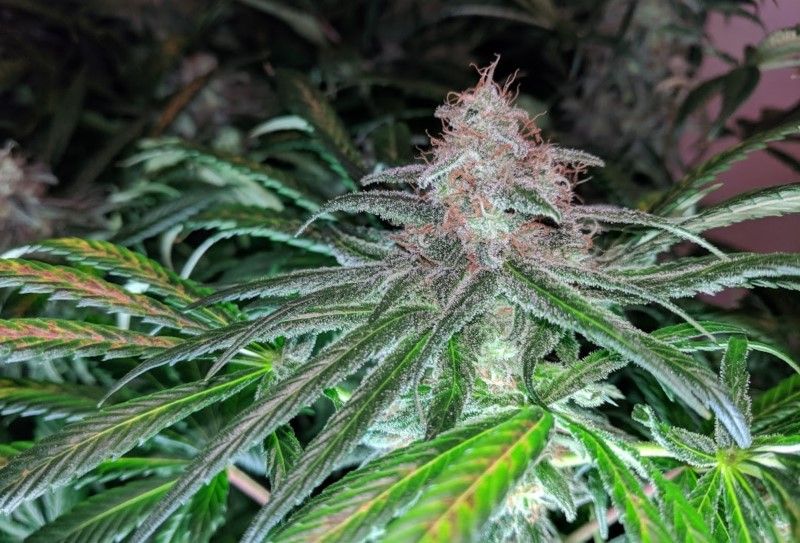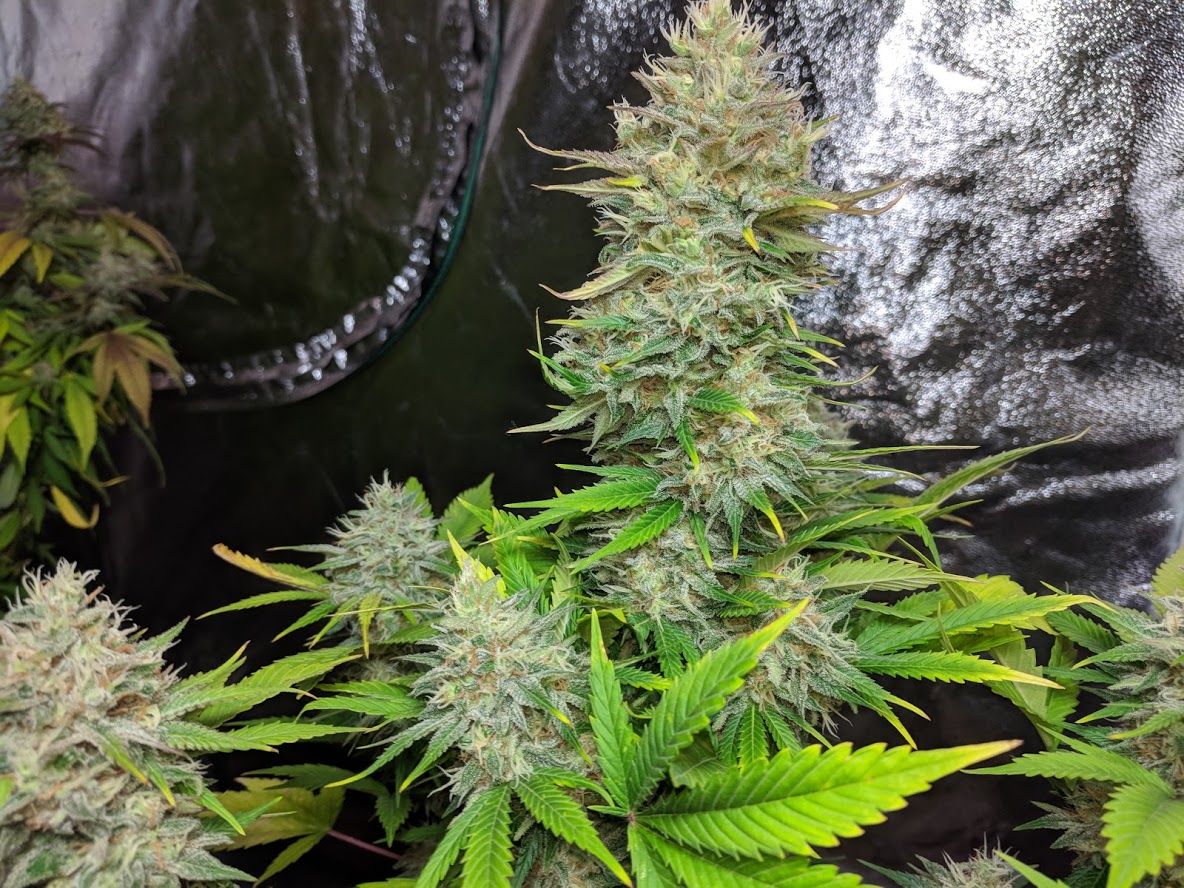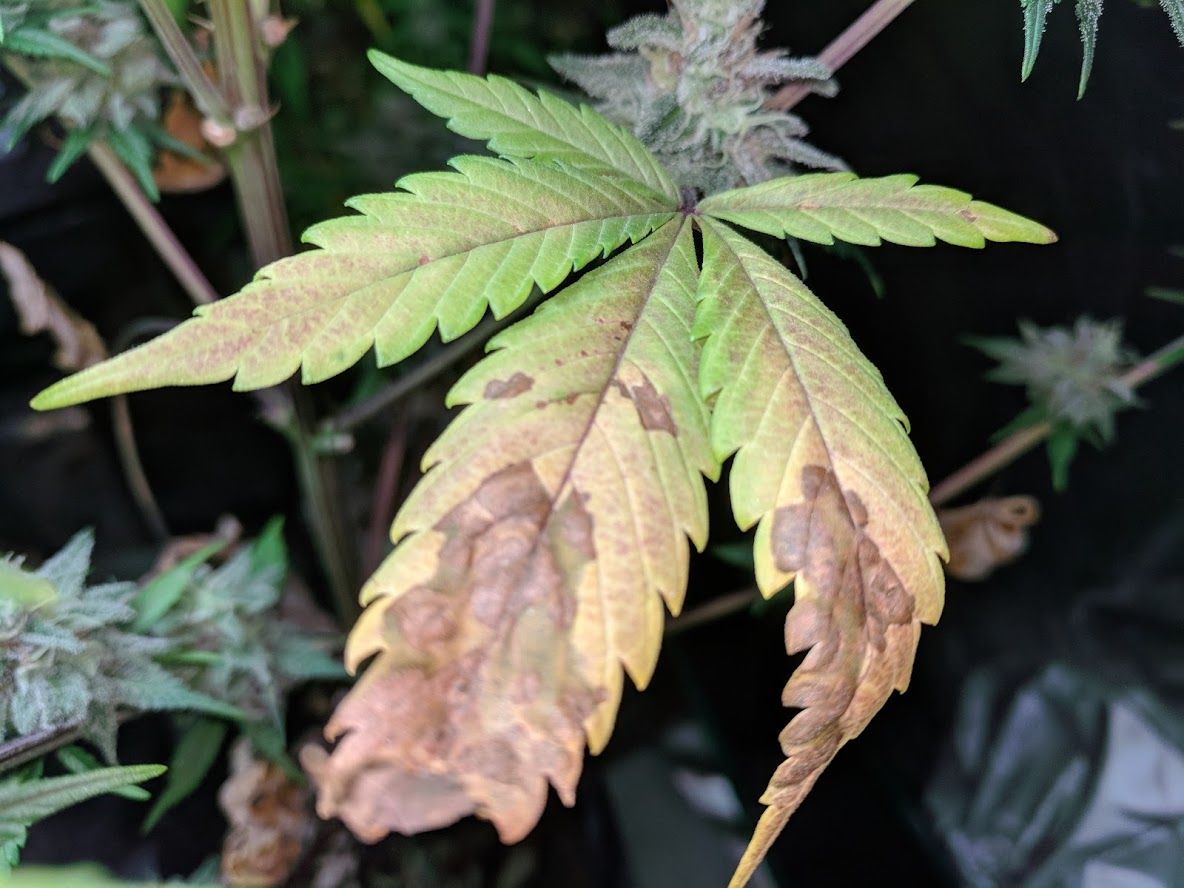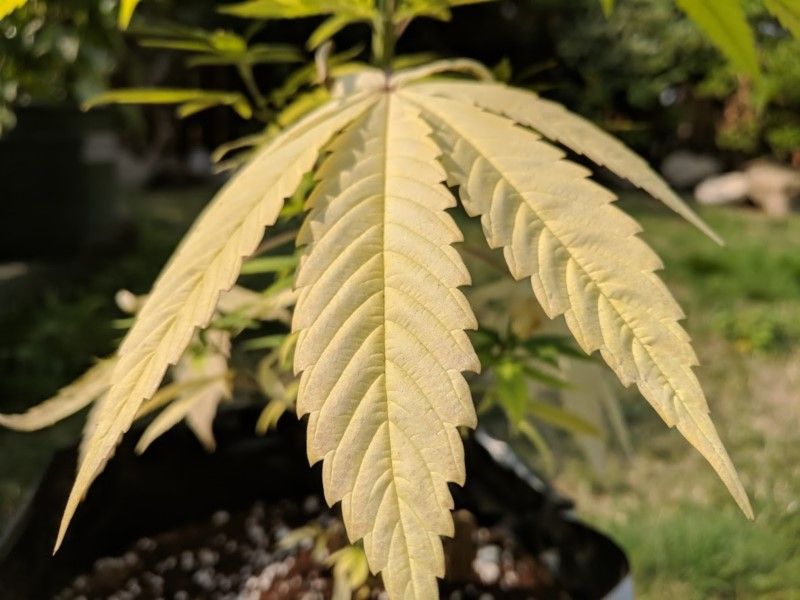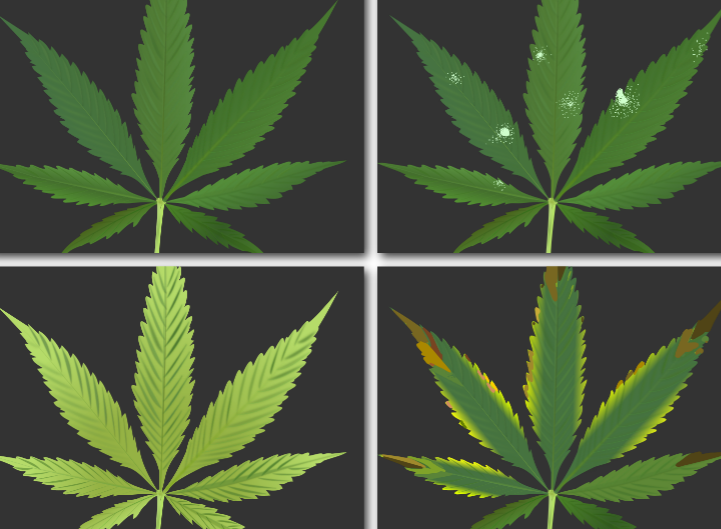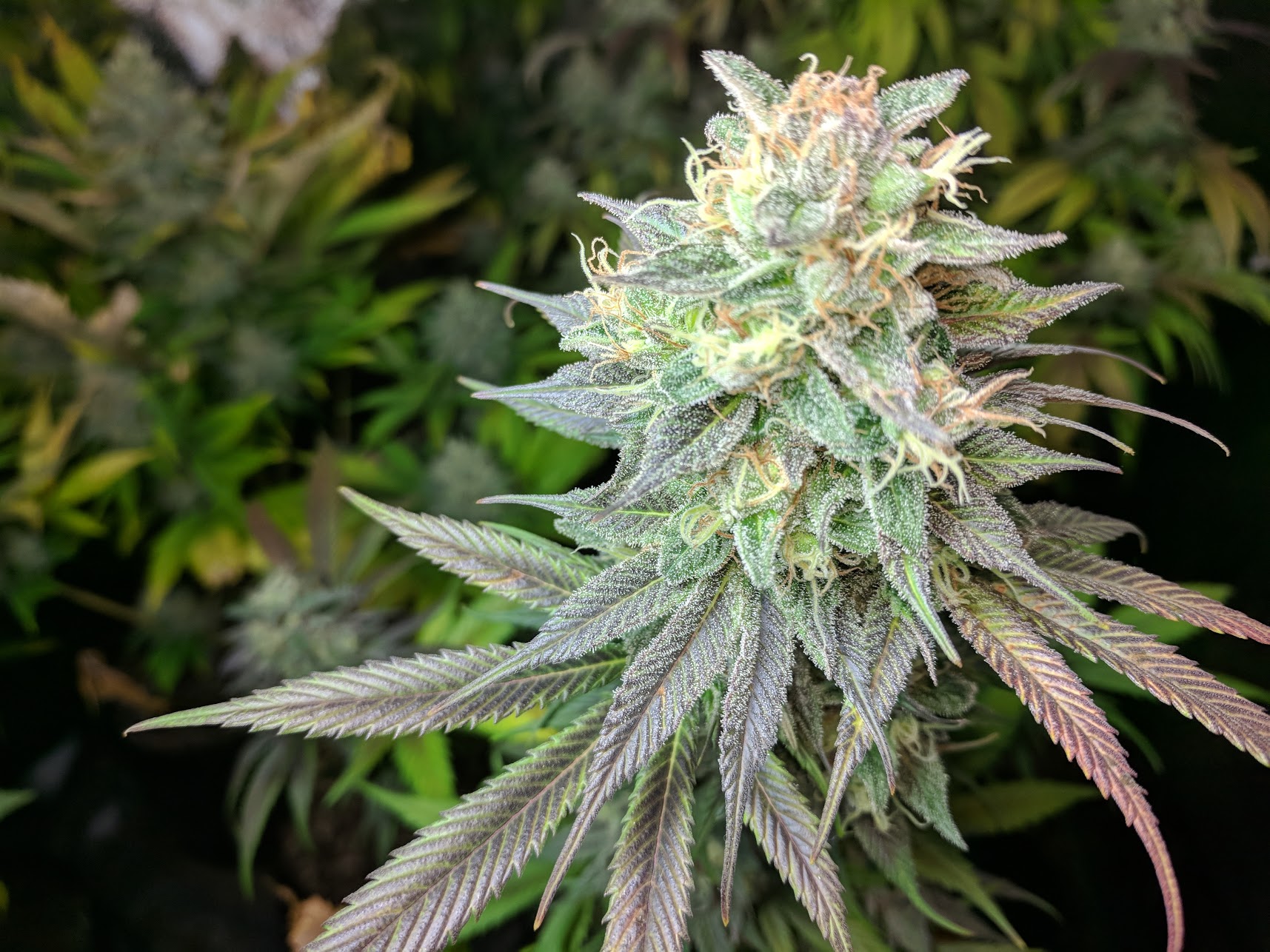Sometimes things don’t go the way you planned. It seems that no matter how careful and attentive you are, things are going to go off the rails with cannabis sometimes. Luckily, most common problems are are easy to diagnose and easy to fix.
Common Nutrient Issues
When your plant is having issues with nutrients, it’s almost impossible to detect until it manifests itself in the leaves. It’s been my experience that practically all nutrient deficiencies are the results of unbalanced pH and then the first step to correcting them is to test the pH near the roots to make sure it’s in range.
Leaf with Normal Nutrient Levels
Since we are going to use leaves to diagnose issues, we should look at what a healthy leaf looks like.
Nitrogen Deficiency
This is one of the most common nutrient issues, and it’s not always a problem. During vegetative growth, the plant needs lots of nitrogen and because it is a basic component in chlorophyll and plant proteins, including DNA and RNA. During flowering, growing marijuana plants need much less nitrogen. Excessive nitrogen can inhibit flower production, so most cannabis feeding schedules reduce nitrogen during the flowering phase. As a result, many cannabis plants appear nitrogen-deficient during the end of the flowering phase. This is normal and not generally a problem, though you should still check to make sure pH problems aren’t causing it.
Learn all about diagnosing and correcting nitrogen issues.
Low Nitrogen Levels
Depleted Nitrogen Levels
Phosphorus Deficiency
Phosphorus is a critical ingredient in photosynthesis, respiration, energy storage and movement, cell division and growth and almost everything else the plant does. The easiest way to tell if your plant has healthy levels of phosphorus is to look at the older fan leaves at the bottom of the plant. Look for discoloration, spots and dark blemishes that form between the veins. Often the leaves will feel stiff and dry to the touch.
Learn all about diagnosing and correcting phosphorous issues..
Low Phosphorus Levels
Depleted Phosphorus Levels
Potassium Deficiency
Cannabis is like all living things and requires potassium for normal growth and maturity. It is an important player in photosynthesis and the regulation of plants responses to light through opening and closing of stomata. The easiest way to tell if your plant has healthy levels of potassium is to look at the older fan leaves at the bottom of the plant. Look for leaves that are turning yellow along the edges and at the tips. As the problem progresses, the tips and edges can look burned.
Learn all about diagnosing and correcting potassium issues..
Low Potassium Levels
Depleted Potassium Levels
Nutrient Burn
This is exactly what it sounds like – chemical fertilizers accumulating in the tips of your plant and giving them a ‘burned’ appearance. This is only a problem if you use synthetic nutrients, organic nutrients won’t burn your plants. Nutrient burn isn’t a big problem, but you should correct it quickly to optimize your growth. The best way to correct nutrient burn is to flush your plant with lots of water and then reduce the nutrients at future feedings.
Common Pest Issues
An ounce of prevention is worth a pound of cure and most common pest issues have the same simple set of solutions:
- Improve ventilation and temperature control. Mites, molds, and fungus all have one thing in common: they prefer warm damp spaces too well ventilated and dry spaces.
- Keep your grow area clean and free of clutter and disinfect between every grow
- Use neem oil regularly! Learn all about the organic wonder solution and how it can help control pests in your garden in this guide.
Learn about using a balanced approach to pest control in this guide.
Mites
Spider mites are tiny bugs that are barely visible with the naked eye, but they leave behind plenty of signs to show where they’ve been. Early stage spider mite infestations are noticeable by small, light-colored, specks on the tops of the leaves. As the infestation proceeds, the mites will spin large webs over the leaves and buds.
White Powdery Mildew
Scientifically speaking, white powdery mildew is white mildew that looks like, well, powder on your plant’s leaves. Often developing in circular patterns, this mild annoyance can become a big issue if not addressed. The best way to prevent mildew is through humidity control. The best way to address mildew growing on your plant is to carefully clean the mold off and then use a topical treatment, like neem oil.
To handle almost all pest problems, use neem oil regularly. Learn all about the organic wonder solution and how it can help control pests in your garden in this guide.

